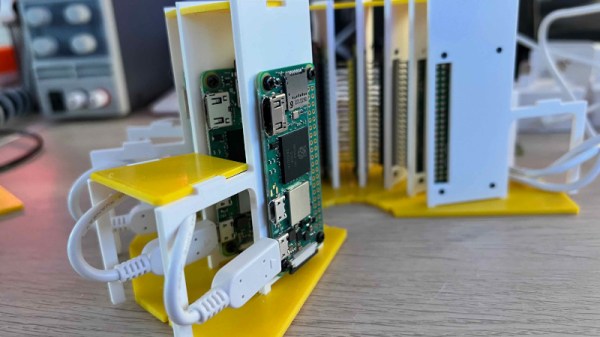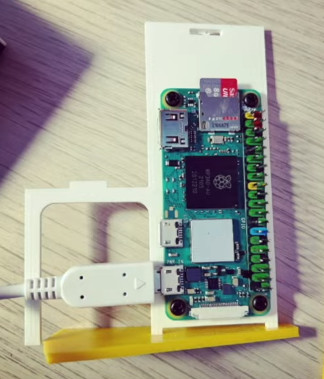A 3D printer and laser cutter were cited as cause in two deaths. A couple (and two cats) were found dead in their apartment this week. The cause of death was carbon monoxide poisoning. Police and the gas company investigated the residence and found no other source of carbon monoxide besides a 3D printer and a laser cutter. Be sure to check out the people who know more about these deaths than the people who actually investigated these deaths in the comments below. In the mean time, get a CO detector. It’s nasty stuff.
At CES last this month, Lulzbot unleashed the MOARstruder. It’s an extruder with a massive, massive, 1.2mm nozzle. [James] from xrobots dot co dot uk just got his hands on the MOARstruder and the initial results are pretty cool. With a 1.2mm nozzle, you can print big parts fast (helpful for [James]’ massive builds), and the parts are stronger. Check out the video for a great hammer vs. printed part test.
We knew this would happen eventually. Pi Blades. Element14 is now offering ‘breakout boards but not quite’ for the full-size Raspberry Pis and Pi HATs. The idea of this product is to package clusters of Pis into an easy-to-use form factor. The Bitscope Blade Quattro, for example, provides power to four Pis. In other news, I own 20% of the world’s supply of vertical SODIMM sockets.
Arbitrary Code Execution On The Nintendo 64. A bit of background is required before going into this. Pokemon Stadium is a game for the N64. It used a Transfer Pak to read the save game data on Pokemon Game Boy cartridges to battle, trade, and organize Pokemon. Additionally, the Pokemon Tower in Pokemon Stadium allows players to play first-gen Game Boy Pokemon games from within an N64 – sort of like the SNES Super Game Boy. By using two Game Boy Pokemon games and two Transfer Paks, arbitrary code can be executed on the N64. Video demo right here. This is really cool, and the next obvious step is a ‘bootloader’ of sorts to allow arbitrary code downloading from controller button presses.
The Travelling Hacker Box is on the move! The original plan for the Travelling Hacker Box was to visit home base for the 2016 Hackaday SuperConference, then depart to foreign lands beginning with Canada, Greenland, Europe, Africa, Asia, Oceana, and the other America. After the SuperCon, the box was shipped out to its first recipient in Canada. The box came back. Something with customs. Now, the Travelling Hacker Box is on the move again. The plan is still the same, it’s just delayed a month or two. If you want to check out the future travels of the Travelling Hacker Box, here you go.














